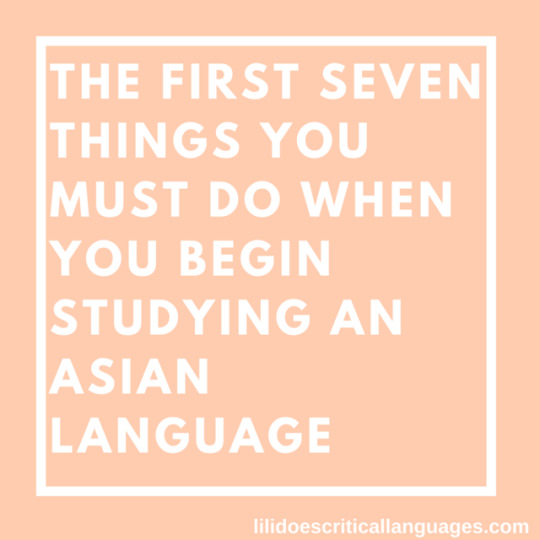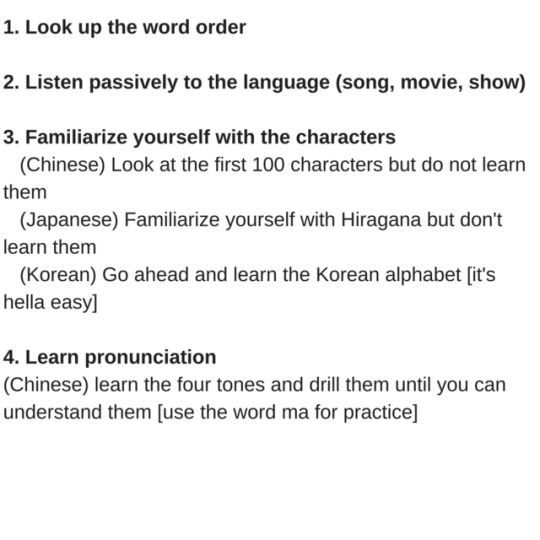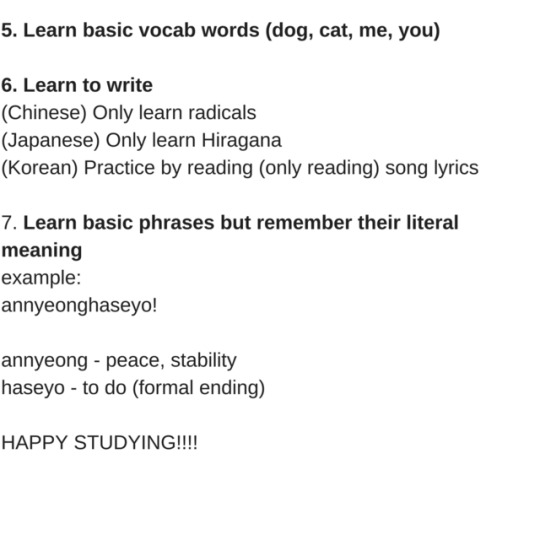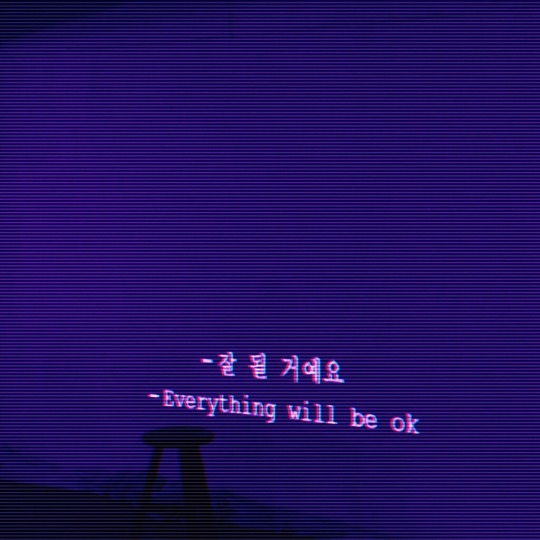Photographer, Creater, Designer, and Adventurer. Am currently on a Social Media Detox for the month of December. See you in January!
Don't wanna be here? Send us removal request.
Photo

Studying in Tagalog
photo by luis llerena
pag-aaral - studying
pagbabasa - reading
pagsusulat - writing
pagsasalita - speaking
aklatan - library
aklat - book
kompyuter - computer
kwaderno - notebook
bolpen - pen
lapis - pencil
essay - sanaysay
kape - coffee
pagpupuyat - staying up late
pagsasaliksik - research
bonus phrase
“pagsusunog ng kilay” - to work hard
91 notes
·
View notes
Text
looking for blogs to follow
hi! since I’ve started using this blog again I’m looking to fill up my dash~ I am fluent in English and French, and currently working on practicing translation, as well as studying Tagalog.
if you’re a langblr/studyblr that posts about:
Tagalog or Filipino
French
Spanish
Portuguese
Korean
linguistics
marine biology
coding
could you please reblog this post so I can check out your blog? ty!!
101 notes
·
View notes
Text
Learn Essential Spanish!: Expresiones comunes en español (Common Expressions in Spanish)
Spanish - American English - Filipino 🇪🇸🇺🇸🇵🇭
¡Buenos días! - Good morning! - Magandang umaga! ¡Buenas tarde! - Good afternoon! - Magandang hapon ¡Buenas noches! - Good evening/night - Magandang gabi! ¡Hola! - Hello/Hi! - Mabuhay (Standard Filipino - formal) ¡Chau! - Bye (informal) - paalam/babay ¿Que tal? o ¿Como estas? - How are you/doing? - Kumusta? ¡Pásalo bien! - Have fun! - mag-enjoy ka! ¡Adiós! - goodbye (formal) - paalam na
Hasta luego - see you later - sa uulitin Hasta mañana - see you tomorrow - bukas ulit! Hasta el lunes, martes… - See you on (insert day) - kita tayo sa (ilagay kung anong araw)
¡Feliz cumpleaños! - Happy Birthday! - Maligayang Kaarawan! ¡Feliz Navidad! - Merry Christmas! - Maligayang Pasko! !Feliz año nuevo! - Happy New Year! - Masaganang bagong taon! ¡Feliz aniversario! - Happy anniversary!
¡Felicidades! - congratulations - masayang pagbati ¡Enhorabuena! son sinónimo ¡felicidades! ¡Buena suerte - good luck!
Perdón - excuse me, sorry - makikiraan, pasensya, paumanhin po Lo siento - I’m sorry Por favor - please, kindly - pakiusap Gracias - thank you - salamat De nada - your welcome - walang anuman
Un momento - one moment - saglit lang po No se, no lo se - I don’t know, I don’t know it - Hindi ko alam Vale - okay
Te amo - I love you - minamahal kita (romantic) Te quiero - I love you (close friends, and family) mahal ko kayong lahat Te echo de menos - I missed you.
¿Cómo se dice (palabra) en español? - How do you say (this word in Spanish? ¿Cómo se pronuncia (palabra)? - How do you pronounce (this word)? ¿Cómo se escribe (palabra) How do you spell (this word)? ¿Qué significa (palabra) - What does (this word) mean? ¿Qué quiere decir (palabra) sinónimo con ¿qué significa? ¿Qué haces? - what do you do?
112 notes
·
View notes
Photo







my favorite lyrics from map of the soul: persona
3K notes
·
View notes
Photo

『Learn Korean with Kpop』BTS - Spring Day
보고 싶다 이렇게 말하니까 더 보고 싶다 I miss you, when I say that, I miss you more
보고 싶다: I miss you -니까: since, because 이렇게 말하니까: since I saying (like) this 더: more
너희 사진을 보고 있어도 보고 싶다 Although I’m looking at your photo, I still miss you
너희: your 사진: photo, picture 을: object particle 보고 있어 (보고 있다): looking at ���: although, even though
Keep reading
5K notes
·
View notes
Photo

@starbucks 😍 . Pict by: @andreassterneer . #hacker #codepen #css #tryhtml #javascript #i❤️html #developer #design #hacker #java #php #html #html5 #css #css3 #php #instagood #python #vscode #node #code #programming #tryhtml #vscode #code #javascript #js #node #css #php #sell #bash #python #react #var #rubyonrails #github #git #gitlab #hacker #developer
9 notes
·
View notes
Photo



Hey guys, so instead of a long drawn on post, I’ve made an easy to read version of how to begin studying Asian languages through pictures! Yay!!!! Everything is really straight forward and easy but let me know if you have any questions!
7K notes
·
View notes
Text
☆ THINGS YOU CAN SEND TO YOUR IDOLS/FAVS💕
💚 MORNING TIME/ BEGINNING OF THE DAY.
굿모닝/좋은 아침 - good morning 안녕하세요 - hello 잘 잤어요? - did u sleep well? 화이팅 - fighting 힘내세요 - have strenght 오늘 기분이/컨디션 어때요? - how’s your mood/condition today? 좋은 하루 보내세요 - have a good day 오늘도 네 곁에 있을게요 - i’ll be by your side today as well
💙 NIGHT TIME/ THE END OF THE DAY.
굿밤/굿나잇/좋은 밤 - good night 안녕히 주무세요 - good night 잘자요 - sleep well 오늘 수고핬어요 - you’ve worked hard today 오늘 잘했어요 - you did well today 이제 자야 해요 - you should sleep now 내일 봐요 - see you tomorrow
💜 LOVING WORDS TO CHEER THEM UP.
보고싶어요 - i miss you 관찮아요? - are you okay? 사랑해요 - i love you 걱정 마세요 - don’t worry 우리 항상 네 곁에 있을게요 - we will always be by your side 역시 최고이다! - as excepted, you’re the best! 이 노래 정말 좋아요 - this song is really good 이 노래 너무 좋아해요 - i love this song very much 좋은 음악을 줘서 고마워요 - thank you for giving us good music 오늘도 예뻐요 - you’re pretty today as well 잘 들을 게요 - i will listen to it well 축하해요! - congrats!
💛 LOVE REMINDERS.
밥 먹었어요? - did u eat? 맛있게 먹어요 - eat deliciously 잘 먹어요! - eat well! 조심하세요 - please be careful 아프지마세요 - don’t get sick/hurt 감기 조심하세요 - don’t catch a cold
💖 WHEN YOU WANT TO REACT TO WHAT THEY POST (PICTURES, VIDEOS..)
예뻐요 - pretty 잘 생겼어요 - handsome 멋있어요 - cool 귀여워요 - cute 좋아요 - good! 아주 좋아요 - i like (very much) 오빠/언니 짱이에요! - oppa/unnie is the best!
⚠ i will probably add more soon..😄 correct me if u see any mistakes!
12K notes
·
View notes
Photo

Tips for when studying is the last thing you want to do!
1. Write out on sticky notes the name of objects in your room, then go ahead and stick them on everything. Next time you turn on your light, make yourself look (or at least glance) at the word. Next time you open your drawer, look at the note. Any time you turn on your lamp, your laptop charger or your speakers, you’ll always have that vocabulary there and you’ll learn each of them in no time.
2. Play the radio/podcasts or a Korean show for background noise. Most of us don’t like to sit and scroll through Facebook in total silence. I recommend 슈퍼맨이 돌아왔다 (which is available on youtube!) as it is centred around children and any vocabulary you pick up will be helpful. Others include:
• 2 Days 1 Night
• Hello Counselor
• 이웃집 찰스
• Hello Baby
3. Write down phrases on flash cards. Break down the words. Some people have more success reading phrases on flash cards rather than just single vocabulary. Stick these in a place you’ll sit at often, or you could also stick them on items they pertain to just like in tip #1.
4. Just once a day, when you’re out and about or even just at home, search the dictionary for a word. Say you’re out eating, and you don’t know the word for “to order”. Whip out that phone, search it up and try to commit it to memory. One word a day is 365 words a year, and odds are you’ll pick up more than that anyway!
5. Google Play has a selection of multi-language books. Buy a Korean and English children’s book and try to read it (if you’re up to it). The English translation will always be there, so it’s less brain power for you to go and search up everything you don’t know! Plus, you might learn some small phrases in the process.
6. Watch Korean YouTubers. YouTube is fun to watch, so why not watch it in Korean? - 영국남자 (Korean Englishman) is an English man who is great at Korean, he always has English and Korean subs on. By the end of a few episodes you’ll know what “ 남자답다” and “살아 있네!” Means! - Pony’s Makeup is a great channel if you love makeup. You’ll pick up makeup related vocab and phrases, as well learn new techniques and styles. - Maangchi is a Korean lady who teaches you how to cook Korean food. It’s mostly in English but she talks about Korean words sometimes. - 꿀키 is another cooking channel, however there’s no talking, only the blissful sounds of soup boiling and onions frying! She puts small instructions on her videos in both English and Korean. Take notes!
7. Download a widget on your phone that gives you a new word every time you swipe to unlock. Simple, easy and there in your pocket.
8. Fill your social media with Korean. Follow Korean study blogs (though don’t rely on them 100% as most are run by non-fluent speakers), follow Korean daily vocab twitters and Facebook pages. Everything you see will be Korean and you’ll start to pick up on words that you see all the time.
9. Don’t feel discouraged if you haven’t studied for a week. Don’t feel like you’re the worst at Korean, or that you’re so far behind everyone else. Everyone learns differently and at different paces. Me, I’m competitive and need to absorb as much as is humanly possible in a short amount of time. Others stick to a schedule. Some learn stuff here and there. There is no right and wrong way to learn. Do you. Remember, just one word a day equals 365 a year. 2 words a day is even more!
9K notes
·
View notes
Text
KOREAN INTERNET SLANGS/SHORTENED WORDS📱💭
1. KOREAN INTERNET, TEXTING SLANGS
ㅋㅋ ♡ “kk” sound of giggling/laughing
ㅠㅠ, ㅜㅜ ♡ crying/sad eyes
흑 ♡ sobbing sound
ㅎㅎ (하하) ♡ “haha” sound of laughing
ㅍㅎㅎ ♡ “puhaha” sound of laughing
ㅇㅇ (응) ♡ uh, yeah
ㅇㅋ (오키) ♡ okay
ㄱㅅ (감사) ♡ thank you
ㅊㅋ (축하) ♡ congrats
ㄴㄴ (노노) ♡ no
ㅈㅅ (죄송) ♡ sorry
ㄱㄷ (기다려) ♡ wait
ㄱㄱ (고고) ♡ gogo, let’s go
ㅂㅂ (바이바이) ♡ bye bye /or/ ㅂㅇ (바이) ♡ bye
ㅅㄱ (수고) ♡ good job
ㅇㄷ (어디) ♡ where
ㅗㅗ ♡ 🖕🏼 lol
ㅎㅇ (하이) ♡ hi
ㅎㄹ ♡ hello
ㄱㅊ (괜찮아) ♡ it’s fine
ㄷㅊ (닥쳐) ♡ shut up
ㅡㅡ ♡ to express displeasure
2. SHORTENED WORDS
낼 (내일) ♡ tomorrow
짐 (지금) ♡ now
담 (다음) ♡ next
첨 (처음) ♡ first
넘 (너무) ♡ very
좀 (조금) ♡ a little
울 (우리) ♡ we
걍 (그냥) ♡ just
어케 (어떻게) ♡ how
글고 (그리고) ♡ and
젤 (제일) ♡ most, best
먄 (미안) ♡ sorry
짱나 (짜증나) ♡ annoying
글쿤 (그렇구나) ♡ i see
열공 (열심히 공부해) ♡ study hard
재밌다 (재미있다) ♡ to be fun, interesting
알써 (알겠어) ♡ i understand, get i
몰겠어 (모르겠어) ♡ i don’t know
올만이네 (오랜만이네) ♡ long time no see

22K notes
·
View notes
Text
The Basics #3: Sentence Structure and Particles
안녕, 여러분! Hey, everyone! Welcome back to my blog! In this lesson, I want to teach you the basic sentence structure of Korean. Let’s start by examining the sentence structure of English, first!
In English, we use the SVO (subject-verb-object) order to form basic sentences. For example:
I like cats Subject = I Verb = like Object = cats
In Korean, however, we use the SOV (subject-object-verb) order to do this. Thus, instead of “I like cats,” we would literally say “I cats like.” The Korean translation for the sentence above, for example, would be:
저는 고양이들을 좋아해요 Subject = 저는 (I) Object = 고양이들을 (cats) Verb = 좋아해요 (like)
To a native English speaker, this looks very odd at first. But don’t worry! After some practice, you’ll have no problem with this!
Now, let’s talk about the real confusing part: particles. In English, we don’t exactly have particles to indicate which word is the subject or object. Korean, however, does. They can often be dropped in normal conversation, but using them creates less ambiguity and makes your sentences clearer. Let’s begin with topic particles.
Topic Particles: 은/는
As their title suggests, topic particles show what the topic of the sentence is. In the sentence, 저는 고양이들을 좋아해요, 저는 is the topic. 저, I, is the one doing the action, which is liking something else.
Let’s look at another example: 제 이름은 미셸입니다. (My name is Michele)
Here, the word for “name,” 이름, has a topic particle attached. We are talking about my name, therefore it’s the main focus of the sentence.
*note: 는 is attacked to nouns ending in a vowel (ex. 저는), while 은 is attached to those ending with consonants (ex. 이름은). This is just for the sake of easier pronunciation!
Subject Particles: 이/가
Now let’s move on to the subject particles. Let’s read this example:
오늘은 날씨가 좋아요. (The weather is good today)
오늘 = today
날씨 = weather
좋아요 = is/are/am good
*Note: 이 is attached to nouns ending in a consonant (ex. 집이), while 가 is attached to nouns ending with a vowel (ex. 날씨가).
We have both a topic particle and a subject particle. Here, the topic is 오늘. We are talking about today, so that’s the main topic of the sentence. You may also think of this sentence like this: As for today, the weather is good. This sets up “today” as the main topic.
But what about 날씨? That’s also what the sentence is about: the weather. So why does it have a subject particle instead?
This concept can be confusing for even advanced learners (and me too lol). The truth is that they are essentially the same thing. There is, however, a difference in some situations. Let’s use the same example.
오늘은 날씨가 좋아요.
This could simply mean “the weather is good today,” but may have a different nuance depending on the context. 오늘 has the topic particle attached, meaning that a comparison between “today” and another day could be a part of the conversation. For example:
어제 비가 왔어요. 오늘은 날씨가 좋아요.
It rained yesterday. Today, the weather is good.
어제 = yesterday
비 = rain
왔어요 = came (literally means rain came yesterday)
Because 오늘 has 은 attached, there is an emphasis on “today” (in this particular case). We are pointing out a distinction between the events of yesterday and today, hence why 오늘 should be emphasized–it rained yesterday, but as for today, it is very nice outside. Shall we try another example?
제가 집에 안 갔어요. 민지는 집에 갔어요.
I did not go home. Minji went home
제가 = another way of saying I/me (as the subject of sentence) (formal)
집 = home/house
에 = location particle
안 = not
갔어요 = went (past-tense of “to go”)
* When talking about locations, the location you are indicating would usually go after the subject/topic, as seen here. Sentences must always end in a verb, unlike English!
In the second sentence, 민지 has 는 attached. In this context, you are trying to make a comparison between what the two of you did. You didn’t go home, but Minji did. Perhaps someone thought you left their party before it was over, but in reality, Minji is the one who left early. Hope that makes more sense! Still have the energy to learn about object particles?
Object Particles: 을/를
Let’s look at our first example again: 저는 고양이들을 좋아해요
Here, 고양이들 (cats), is the object. This means that I, 저는, am the one doing the action onto the cats. Let’s try another one:
저는 책을 읽어요. I read a book.
책 = book
읽어요 = read
Like the previous example, I am the subject acting on the book–I am reading it. Thus, the word for book gets the object particle as it is being acted upon in some way.
That’s about it for the subject, topic, and object particles. Let’s discuss location ones now. These are a little simpler and even mirror what we use in English, so don’t fear!
Location Particles: 에/에서
에 can be used to mark a time or place. In the example above, for instance, you can say 민지는 집에 갔어요 to mean Minji went home. Although we don’t have a particle in the English translation, 에 basically means “to.” In other words, this sentence may be translated as “Minji went to the house.” When you want to indicate that you are going to somewhere, you can attach 에 to that location. Here’s another example:
학교에 왔어요 = I/you/he/she/they came to school.
* In Korean, the subject/topic of the sentence can sometimes be dropped depending on the context. Sometimes, it it understood what/who you are talking about, so the subject/topic doesn’t always need to be indicated.
In this sentence, 에 is used since you came to school. It suggests some sort of change in location–you were in one place first, but you got up and went somewhere else.
에 can also be used when talking about time. For example:
7시에 일어났어요 = I got up at 7 o’clock
시 = word for “o’clock”
일어났어요 = got up
에서 is a little different. The closest English translation is “at.” Unlike 에, 에서 indicates an action that is being done while at that location. For instance:
학교에서 공부해요 = I study at school
공부해요 = study
Like in English, you wouldn’t say “I study to school,” because “study” isn’t a word of motion like the words “go,” “come,” “arrive,” “fly,” “drive,” etc. When using those motion verbs in Korean, you should use 에 since you are moving to another location. 에서, however, simply shows that you are doing an action at a location. This concept isn’t too different from what we use in English, so I hope it makes sense!
에서 can also mean “from” when discussing locations. Like we saw in an earlier lesson, you can say 저는 미국에서 왔어요 to literally mean “I came from America.” In this case, 에서 means “from.”
There are a lot of other particles in Korean that I might make a future lesson about, but I think this is enough for now lol. These are the ones you should know for basic Korean, so just focus on these for now! I hope this was helpful!! As always, feel free to ask me any questions you might have!! 안녕!
1K notes
·
View notes
Text
Korean Slang for Twitter: ㅇㅇ = yes ㄴㄴ = no no ㅎㅎ = haha ㅋㅋ = lol ㅠㅠ = sob ㅡㅡ = wtf ㄱㄷ = wait ㅊㅋ = congrats ㅁㅊ = crazy ㅈㅅ = sorry
527 notes
·
View notes
Text
Vocabulary: Must-Know Places
안녕, 여러분! Hey, guys! Welcome to this new vocabulary list! Here are some basic places that may come up in everyday conversation! Hope this helps you build up your vocab! Let’s start!
가게 = store
거실 = living room
공원 = Park
건물 = building
교실 = classroom
대기실 = waiting room
도서관 = library
뒷마당 = backyard
마트 = mart
방 = room
부엌 = kitchen
버스정류장 = bus stop
병원 = hospital
백화점 = department store
사우나 = sauna
서점 = bookstore
식당 = restaurant
슈퍼마켓/식품점 = supermarket/grocery store
앞마당 = frontyard
아파트 = apartment
운동장 = playground/sports field
응급실 = emergency room
작업실 = workplace
집 = house/home
지하층 = basement
지붕 =roof
지하철역 = subway station
침실 = bedroom
체육관/헬스장 = gym
커피숍 = coffee shop
카페 = cafe
카페테리아 = cafeteria
학교 = school
화장실 = bathroom
Hope this helped increase your vocabulary! Take your time with learning vocab. Before you know it, you’ll be able to recognize these words!! See you in the next lesson! 안녕!
2K notes
·
View notes
Text






• July 17 2019• Tensuke market + Tensuke Express• Columbus Ohio •
If you haven’t had 싸만코 then have you even lived?
104 notes
·
View notes
